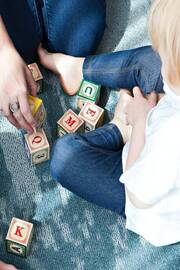Parental Controls for Facebook Messenger
If you’re a parent, you know that it’s important to monitor your child’s online activity to help protect them from potential predators and other dangers. And if your child is using Facebook Messenger, you’ll want to be sure that you have parental controls in place to help keep them safe.
Facebook Messenger is a great way for families to stay in touch. But with so many features and options, it’s important to ensure your kids are using it safely. That’s where parental controls come in. According to research, Facebook Messenger has over 1.3 billion users and attracts 1.8 billion unique visitors each month.
There are several ways to do this, such as using the app’s built-in safety features, monitoring your child’s activity, or using third-party parental control software. Whichever approach you take, it is important to be proactive in protecting your child’s online safety.
In this article, we’ll show you how to set up parental controls for Facebook Messenger. We’ll walk you through the steps for setting up a parental control system on your child’s device and how to monitor their activity and ensure that they’re staying safe online.
What is Facebook Messenger for kids?
Facebook Messenger for kids is a messaging app designed for children to use. The app is connected to the parent’s Facebook account and can be used on any device on which the parent has installed the Facebook app.
The app allows parents to control who their children can talk to and what they can share. Parents can also see when their children are online and approve all of their child’s contacts. The app is free to download and use. It is available on the App Store and the Google Play Store.
Why Facebook Parental control?
The internet is a vast and endless information resource, making it one of the most powerful tools. However, it also comes with several risks, especially for children still learning to navigate the world.
This is the reason why it’s so necessary for parents to take control of their child’s internet usage and ensure they are only accessing appropriate content. Facebook parental control is one of the best ways to do this.
Parental control allows parents to monitor their child’s internet usage, set limits on their screen time, and block inappropriate content. It’s a valuable tool for keeping children safe online and ensuring they are only exposed to age-appropriate material.
Is Facebook Messenger’s Kids safe?
As the Messaging app wars heat up, one app is coming under fire for its safety features – or lack thereof. Facebook Messenger’s Kids app, aimed at children under 13, has come under scrutiny for its weak parental controls and lack of privacy protection.
Critics say that the app does not do enough to protect children from online predators and from being bullied by other children. They also say that the app does not have strong enough privacy controls and that children’s personal information is at risk of being shared with third-party advertisers.
So is Facebook Messenger’s Kids app safe? The answer is not clear. The app has some safety features, but it is unclear if those features are enough to protect children from all the dangers of the online world.
Risks of Using Facebook Messenger Kids
Parents who are considering whether to let their kids use Facebook Messenger Kids, make sure you weigh the risks and benefits. Keep reading to learn more about the risks of using Facebook Messenger Kids.
Although Facebook Messenger Kids is a popular messaging app for kids, there are some risks associated with using it. For one, the app is not completely private, as kids can communicate with anyone they are friends with on Facebook.
Additionally, there is no way to verify the age of the people your child is talking to, which means they could be talking to adults. And finally, there is no way to monitor or control the content of the conversations kids are having on the app.
Here are some of the major risks of using Facebook Messenger Kids:
- Anxiety, depression, and other mental health issues.
- Inability to pay clear attention at school or home.
- Leakage of private information in public.
- Exposure to inappropriate content.
- Contact with adult strangers.
- Victim of cyberbullying.
How to Set up Parental Controls on Facebook Messenger Kids?
Messenger Kids is a messaging app that lets kids connect with friends and family and explore their creative side. Downloading and installing the app is free and simple.
Facebook Messenger Kids comes with parental controls, which is a great feature. The app allows you to control who your child can connect with, what they see, and how long they can use it for.
Parents can set up Messenger Kids accounts in a few steps. The following steps will guide you through the process of setting up Messenger Kids:
Step 1: Download and install Messenger Kids from the Google Play Store or App Store.
Step 2: Sign in to your Facebook account on your child’s device. Through this process, your child will not gain access to your Facebook account or have access to your Facebook account.
Step 3: Add your child’s name to the account you create. Afterward, the child can use the device to chat with family and friends you approve.
Step 4: Launch the main Facebook app, click the Menu button, scroll down, and tap More.
Step 5: Select “Messenger Kids” from the Explore menu. Create a contact list for your child and add people to it.
Parental Control Applications to monitor Facebook Messenger
Parental controls can also help you manage your own and your children’s Facebook Messenger usage. If your child spends too much time on Messenger, you can restrict their access to it using parental controls software.
So if you’re concerned about safety or want to manage your child’s messenger usage, consider setting up parental controls. It’s a simple process that can make a big difference.
Conclusion
It’s important to remember that Facebook Messenger is not just for adults. Many children and teenagers use Facebook Messenger, which is why it’s so important for parents to have parental control over the app.
Children’s unsupervised use of Facebook Messenger can lead to several dangers, such as mental health issues, cyberbullying, loss of concentration, etc. Thus parents need to be aware of the risks of letting their children use Facebook Messenger and take steps to ensure their safety.
Following the tips in this article, you can set up controls that will help ensure that your kids are only chatting with people you know and trust. It will give you peace of mind, relaxation, and complete protection.






 Author bio:
Author bio:


